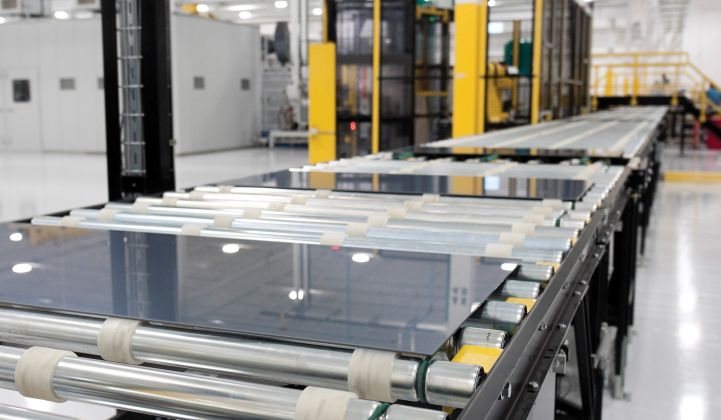First Solar has agreed to sell its North American operations and management business to NovaSource Power Services, the company formed from SunPower’s operations and maintenance business, as part of a streamlining to focus on its core business making thin-film solar modules.
The biggest solar panel maker in the Western Hemisphere has also officially launched a "strategic evaluation" of divesting its project development arm, one it hinted at in February but delayed over the spring due to the COVID-19 pandemic.
Thursday’s agreement to sell the O&M business was driven by expectations of a more challenging environment for a business that’s seeing increased competition and reduced power-purchase agreement (PPA) prices for the utility-scale solar projects it serves, CEO Mark Widmar said during the Tempe, Ariz.-based company’s second-quarter earnings conference call.
Back in 2017, First Solar’s O&M business was seeing above 30 percent gross margins driven by legacy contracts, Widmar said. But since then, competitive pressure and falling PPA prices have driven those margins closer to the 10 percent range. While First Solar could retain the business, “we would need to continue increasing the business scale as well as enhancing the range of O&M product and service offerings” to keep up.
That made the offer from NovaSource a compelling one, although the terms of the sale were not announced. NovaSource, owned by private equity firm Clairvest Group, was created in May when it bought the solar O&M business of SunPower. The Silicon Valley-based solar company decided last year to spin out its module manufacturing business as Maxeon Solar to concentrate on residential and commercial solar installation and batteries and energy services.
First Solar's shifting business model
Like many solar manufacturers, First Solar took on multiple aspects of the process of getting its modules into deployment in its early days. Similarly, it’s since been evaluating the competitiveness of its various business units, including its engineering, procurement and construction business, which it abandoned last year to move to a third-party EPC model.
That decision has led to First Solar separating O&M activities from its North American project development business, which the company raised the possibility of selling in February. Many solar EPC providers are now offering O&M services throughout the time span of the project guarantees they provide for their work, “and some of them want to do that longer-term,” Widmar said.
While the search for different options for its project development arm slowed in the second quarter due to broader disruptions from the COVID-19 pandemic, First Solar decided in June “that the market is now in a better position to evaluate a sale” or other strategic alternatives, Widmar said.
First Solar was able to keep its factories in Ohio, Vietnam and Malaysia running without significant interruption amid the pandemic, and it is ramping up production capacity of its latest Series 6 modules to an estimated 8 gigawatts by the end of 2021. The company has set a goal of increasing the efficiency of those modules from 440+ watts to 500 watts over the next four years, in a race to improve the efficiency of its cadmium-telluride thin-film modules to compete against higher-efficiency crystalline silicon modules from competitors such as LG Solar, Hanwha Q Cells, Jinko Solar and Maxeon Solar.
First Solar reported second-quarter net income of $36.9 million, or 35 cents per share, down from $90 million or 86 cents per share in the previous quarter but an improvement from a loss of $18.5 million or 18 cents per share in the same quarter last year.
Second-quarter revenue of $642 million was up from $532 million in the previous quarter and $585 million in the same quarter last year, and gross profit margin grew to 21.4 percent in Q2 compared to 17 percent in Q1.
But the cost of sales rose to $504 million compared to $442 million in the previous quarter, and $89 million in income tax benefits driven by federal COVID-19 stimulus legislation in the first quarter shifted to a $10 million income tax loss in the second quarter, driving down second-quarter profits.
While the COVID-19 pandemic has not brought any material impact to the thin-film solar giant, First Solar hasn’t reinstated the full 2020 guidance it withdrew last quarter in the face of ongoing uncertainty over long-term economic impacts. It did retain its 5.9-gigawatt full-year module production target and said it expects operating expenses of $345 million to $365 million and capital expenditures in the $450 million to $550 million range related to Series 6 module manufacturing capacity build-out.
First Solar’s cushion of cash and marketable securities stood at $1.64 billion at the end of the quarter, up $44 million from the previous quarter but down from the $2.3 billion it held at the end of 2019. Much of the decline since then was from a $350 million payment to settle a class-action lawsuit filed in 2012.




